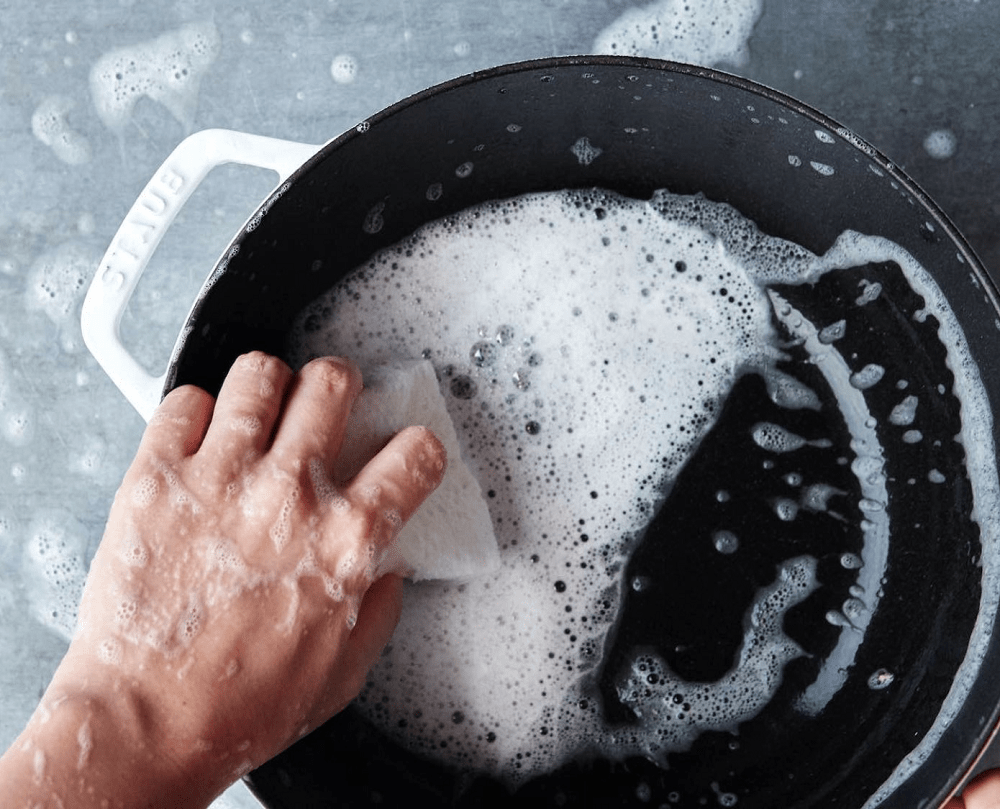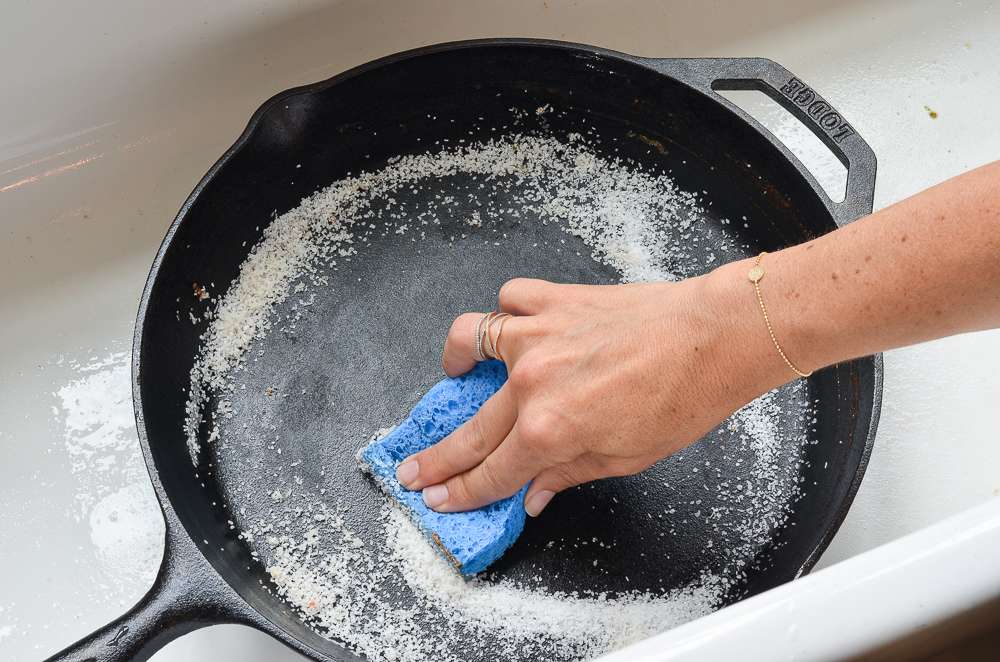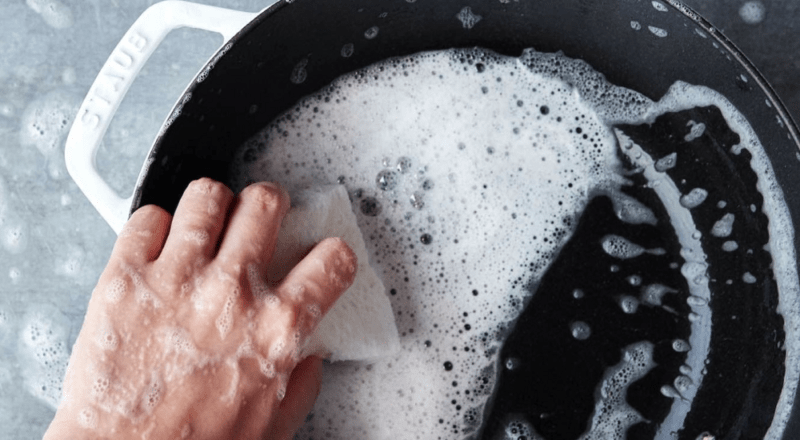Cast iron skillets are a fantastic addition to any kitchen, beloved for their longevity and ability to retain heat. However, many users frequently face the issue of a sticky surface after seasoning. This can be frustrating, especially after spending time seasoning your skillet, expecting a smooth, non-stick surface.
Understanding why cast iron becomes sticky and learning how to prevent it can save you from culinary headaches and keep your cookware in top shape.

What Is Seasoning in Cast Iron?
Seasoning refers to the process of coating a cast iron skillet with a thin layer of oil and then heating it to create a non-stick surface. This process forms a layer of polymerized fat on the skillet’s surface, which combined with iron, makes it more resistant to rust and promotes non-stick cooking.
The Importance of Proper Seasoning
Proper seasoning enhances the longevity and performance of your cast iron cookware. It prevents food from sticking, making it easier to cook and clean. However, improper seasoning can lead to a sticky residue, defeating the purpose of the effort.

Why Your Cast Iron Is Sticky After Seasoning
The primary reason for a sticky surface is the application of too much oil during the seasoning process. Excess oil doesn’t properly polymerize, resulting in a sticky layer.
Overuse of Oil
Using too much oil is a common mistake. Instead of forming a smooth, non-stick layer, the excess oil creates a sticky texture. It’s crucial to apply a thin, even layer of oil to avoid this problem.
Not Heating the Cookware Properly
Another reason could be insufficient heating. The oil needs to reach a high temperature to properly bond with the iron surface. If the temperature isn’t high enough, the oil won’t polymerize correctly, leaving a sticky residue.
Using the Wrong Type of Oil
Using oils with low smoke points can also result in a sticky skillet. Oils like olive oil might not be ideal for seasoning as they can break down before polymerizing, leaving a sticky surface.

How to Avoid Sticky Cast Iron After Seasoning
Now that we understand the causes, let’s discuss how to prevent and fix sticky cast iron surfaces.
Use the Right Amount of Oil
The key is to use just enough oil to coat the skillet lightly. Wipe away any excess oil before placing it in the oven.
Choose the Right Oil
Select oils with higher smoke points like grapeseed, sunflower, or flaxseed oil. They tend to create a better non-stick surface and are less likely to leave residue.
Temperature and Time Matter
Ensure the oven reaches the desired temperature, typically around 450F – 500F, and bake the skillet upside down for at least an hour. This allows the oil to properly bond with the cast iron surface.
Seasoning Process: Step-by-Step
1. Preheat your oven to the desired temperature.
2. Apply a thin coat of your chosen oil to the skillet.
3. Place the skillet upside down in the oven to prevent pooling of oil, and bake for an hour.
4. Allow it to cool in the oven before removing.

Maintaining Your Cast Iron
Regular maintenance is essential to keep your cast iron in good condition and prevent stickiness. Here’s how:
Regular Cleaning
After each use, clean the skillet with hot water and a brush. Avoid using soap as it can strip the seasoning.
Drying and Oiling
After washing, dry thoroughly and apply a light coat of oil to prevent rusting and maintain the seasoned surface.
Reseasoning When Needed
If the skillet starts feeling sticky or dull, re-season it by repeating the seasoning process.
Common Misconceptions About Cast Iron Seasoning
Let’s clear up some myths and misconceptions about seasoning cast iron.
Myth: Soap Ruins Seasoning
While it’s best to avoid harsh detergents, modern dish soaps are generally safe for occasional use on well-seasoned cast iron.
Myth: Season Once and Done
Seasoning is an ongoing process. Each use builds on the seasoning, improving the non-stick surface over time.
Myth: All Oils Are Equal
Not all oils are suitable for seasoning. High smoke point oils work best for developing a durable, non-stick layer.
Additional Tips for Perfect Cast Iron Seasoning
Here are some additional tips to help you achieve and maintain perfect seasoning on your cast iron cookware.
Avoid Acidic Foods
Cooking highly acidic foods can strip away the seasoning. However, once your skillet is well-seasoned, it becomes less susceptible to such damage.
Regular Cooking
Frequent use of your cast iron, especially with oily or fatty foods, helps build and maintain the seasoning.
Storing Your Cast Iron
Store your cookware in a dry place. Consider placing a paper towel between stacked skillets to prevent moisture buildup and rusting.
FAQs
How often should I season my cast iron skillet?
Regular use naturally enhances the seasoning, but if the surface becomes dull or sticky, it’s a good idea to re-season it every few months.
Can I use any type of oil for seasoning?
For best results, use oils with high smoke points like grapeseed, sunflower, or flaxseed oil. Avoid oils like olive oil that have lower smoke points.
What if my cast iron skillet is rusty?
If your cast iron skillet has developed rust, don’t worry. You can scrub off the rust and re-season it to restore its non-stick surface. Check out How to Reseason for detailed steps.
As an Amazon Associate, I earn from qualifying purchases.

